How does a range hood work?
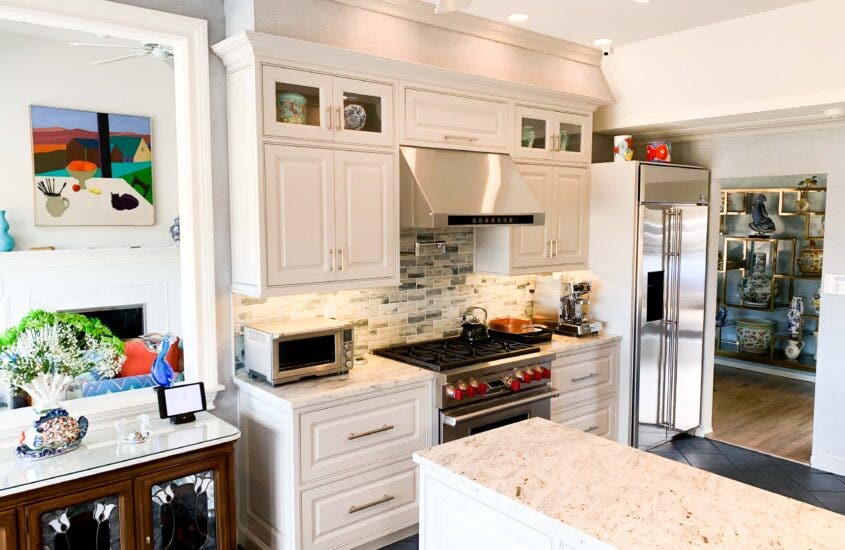
Most range hoods or vent hoods are powered by a single motor. Some have two or more. These blower motors suck fumes and cooking exhaust from over your cooktop through ductwork and outside your home (or through charcoal filters with ductless models).
Residential hoods pull up to 2000 CFM, while commercial range hoods can pull up to 5000 CFM or more. They are typically powered with a standard 120-volt outlet or hardwired straight into the kitchen’s electrical system.
Table of Contents
What is a range hood?
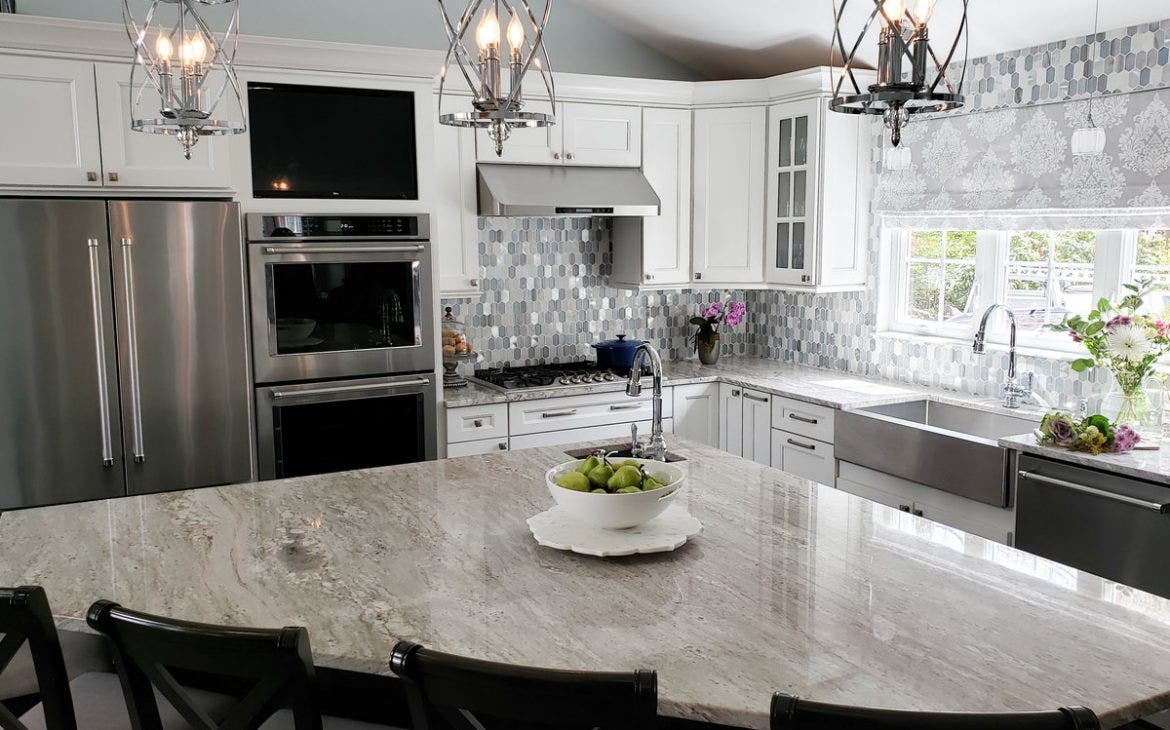
A range hood is a kitchen appliance that filters smoke and other unwanted contaminants in your kitchen air outside of your home. Residential range hoods come in a variety of CFM ratings. Most residential hoods come in 400-1800 CFM.
But, it’s possible to find range hoods under 400 CFM. Or if you’re an avid cook looking for an incredibly powerful hood, 2000 CFM may be what you’re looking for.
The two most common types are ducted and ductless. Ducted range hoods pull air through ductwork that can run through your wall or ceiling and then outside your home. This is the most effective option in your home since they filter all the grease, dirt, and chemicals in your air outside your home.
Ductless hoods, in contrast, recirculate your kitchen air through some type of filter. It will trap some grease and dirt, but the same air will recirculate inside your home. Ductless hoods work great in apartments, condos, or other living spaces where you can’t install ductwork.
In general, if you cook often or cook a lot of Asian type foods, purchase a ducted hood rather than a ductless model if at all possible.
Basic Components
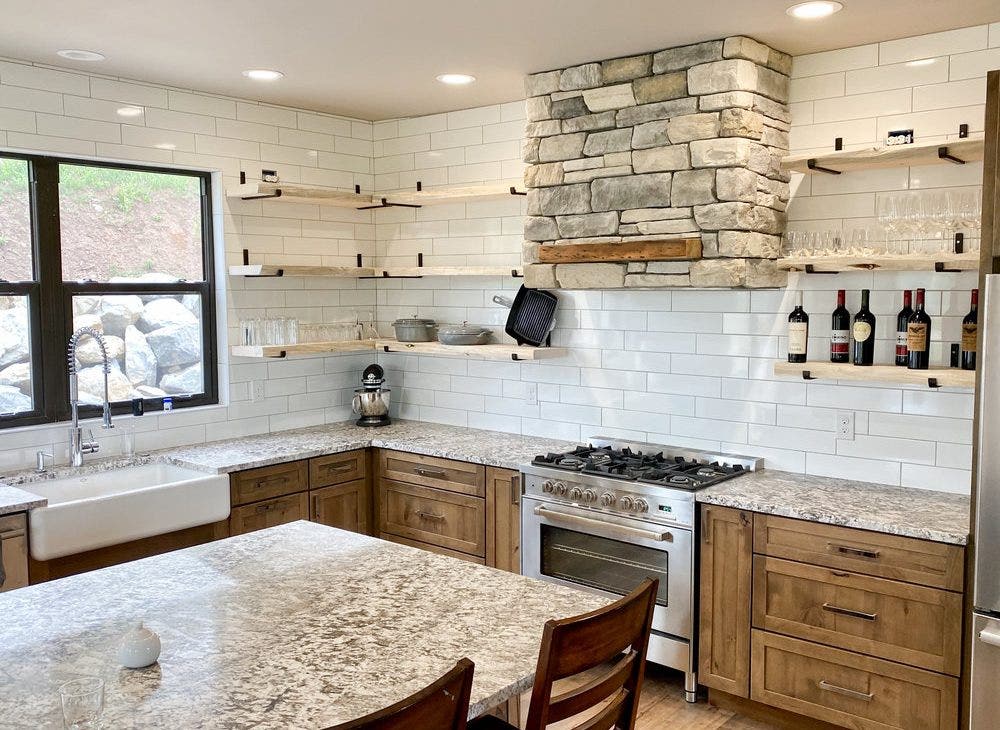
Blower
The blower powers the range hood. Most range hoods come with a single blower, but a dual blower is common as well. Blowers consist of some protective housing, fan blades, and a motor.
Blower Types
There are three types of blowers: local blower, inline blower, and external blower. A local blower is inside the hood. These blowers are the most common followed by remote blowers.
Remote blowers are installed within your ductwork. These are further from your range hood and thus quieter than local blowers.
The final type of blower is external. Not many choose to install an external blower because of the extra expense, but this type will go outside your home or on your roof.
Controls
Every range hood includes a control panel. Stainless steel push buttons are some of the most common control panels. On professional-quality vent hoods, you’ll also see elegant LED touch panels.
Here are a few of the most common types of controls.
Types
- LED/Halogen light controls
- Heat lamp controls
- Blower speed
- Four-speed, six-speed, or fully adjustable
- Time delay controls
- Clock
- A timer to clean your hood filters
- On/off switch
Filter Types
At Proline Range Hoods, we sell vent hoods with three different types of filters.
- Stainless Steel Baffle Filter
- Stainless Steel Mesh Filter
- Charcoal Filter
Most of our range hoods come with stainless steel baffle filters, but select models come with mesh filters.
Charcoal filters are paired with either baffle or mesh filters in our ductless models.
The larger your range hood, the more filters it will have to vent all unwanted air to the outside (or back into your home) efficiently.
Circuit Board
Inside the range hood, you’ll find a circuit board. It is an essential part of the range hood, allowing all of the controls and lights to function. You won’t need to pay much attention to this part of your vent hood; it is rare that the circuit board malfunctions.
Lights
At Proline Range Hoods, our hoods come with LED lights or Halogen lights. Some have heat lamps as well. These are really convenient. Once you’re done cooking, you can keep your food warm and ready to serve while you wrap up in the kitchen.
Halogens and LEDs will last you a long time – LEDs, in particular, will last years. But even then, your lights may burn out occasionally. If this is the case, replacing them is easy!
Do range hoods have to be vented outside?
Your range hood can either vent to the outside if it is a ducted range hood. Or, you can purchase one that recirculates the air in your kitchen; those hoods are called ductless range or vent hoods. If you want the job done right, ducted range hoods are more efficient and powerful than the ductless ones.
But some people may not be able to duct their hood to the outside. The most common situation we run into is people who live in an apartment or condo. These customers can’t install ductwork either due to their building codes or because they live in a multi-story complex where they can’t duct to the outside.
If you fit that description, consider a ductless range hood for your kitchen.
How does a ducted range hood work?
Ducted range hoods move your kitchen air through ducting and outside your home. This ensures that you have great indoor air quality. The duct can run vertically or horizontally to the outside. Then, it’s usually capped off with a roof or wall cap to keep outside dirt, dust, water, and debris from building up inside the duct.
How does a ductless range hood work?
Recirculating or ductless range hoods filter air through charcoal filters and recirculate it back into your kitchen. The charcoal filters trap some unwanted contaminants and does an average job of neutralizing odors. But it won’t catch all the contaminants, so the best option is to go with a ducted range hood if at all possible.
How does a convertible range hood work?
Convertible range hoods can be converted from ducted to ductless.
Ducted hoods are the most popular type of hood. Typically, you won’t find many options for ductless hoods, but a convertible hood gives you flexibility when choosing the right range hood for your kitchen. They are a great option if you like the style and quality of a ducted hood but want to install it as ductless.
For more information on convertible range hoods, check out this article.
How does a downdraft range hood work?
Downdraft range hoods are fans installed behind your kitchen range. They suck the air down into a duct or inside the vent through filters. Then the air recirculates back into your kitchen. Many downdraft ranges can be lifted out of your kitchen range and set back in place when you’re not cooking. They are not as efficient as typical updraft range hoods which catch the cooking fumes as they rise from your pans.
How does a range hood filter work?
A range hood filter captures grease and dirt from your kitchen air. The most common types of filters are baffle and mesh filters. Ductless hoods use charcoal filters which trap grease and neutralize odors before the air moves back into your kitchen. Replace your charcoal filters after about every 120 hours of cooking. If you use baffle filters, clean these every three to six weeks depending on your cooking style.
For more information, check out the articles below.
How to Clean Your Range Hood Filters
How often should I replace my charcoal filters?
How does a microwave range hood work?
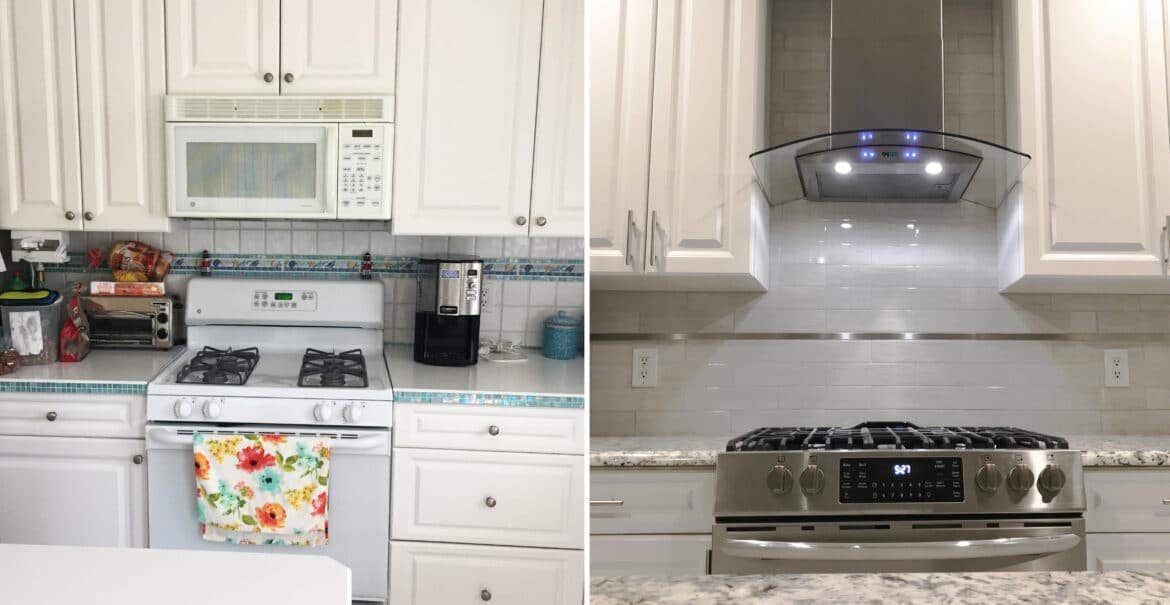
Microwave range hoods are built with fans that vent air through ductwork to the outside or recirculate it in your kitchen. Microwave range hoods are generally 300-400 CFM or weaker, which is not a lot of power to vent smoke and grease outside your kitchen.
One common question we hear from customers is: should I buy a microwave vent hood or a range hood? There’s a lot to cover on this topic, but we wrote an extensive article comparing range hoods and microwaves here.
How does a commercial vent hood work?
A commercial vent hood works just the same as a residential range hood. Blowers are housed inside the range hood. They pull the smoke and dirty air through the hood, through ductwork, and out of the kitchen or cooking space.
The primary difference between commercial and residential hoods is CFM. While most residential range hoods pull between 600 and 1800 CFM of air, commercial hoods are as powerful as 5000-6000 CFM, and sometimes more.
To vent that air effectively, commercial hoods will also require larger diameter ductwork.
If you are looking to purchase a commercial range hood, check out Eastbay Restaurant Supply or Rochester Restaurant Supply.
Commercial range hoods are popular in restaurants, where people cook for hours at a time. Restaurants are required by law to follow rules and regulations published each year by the International Code Council.
Building codes may also vary depending on the region you live in. Consult with a licensed contractor, your city council, or other local authorities to learn more about the specific requirements.
Commercial Vent Hoods for Your Home
Proline specializes in professional quality residential range hoods. Our powerful and durable hoods are commercial quality fans for your kitchen.
If you’re interested in buying a range hood, click on the banner below.
How do Proline’s vent hoods work?
At Proline, we manufacture hoods that are easy to use. Most of our hoods use stainless steel push buttons and touch control panels, while a couple of them feature push buttons. Some of our island hoods feature matching control panels to make operating the controls even easier while you’re busy cooking in the kitchen.
Check out this page for detailed instructions on how to operate each one of our range hoods.
Benefits of a Range Hood
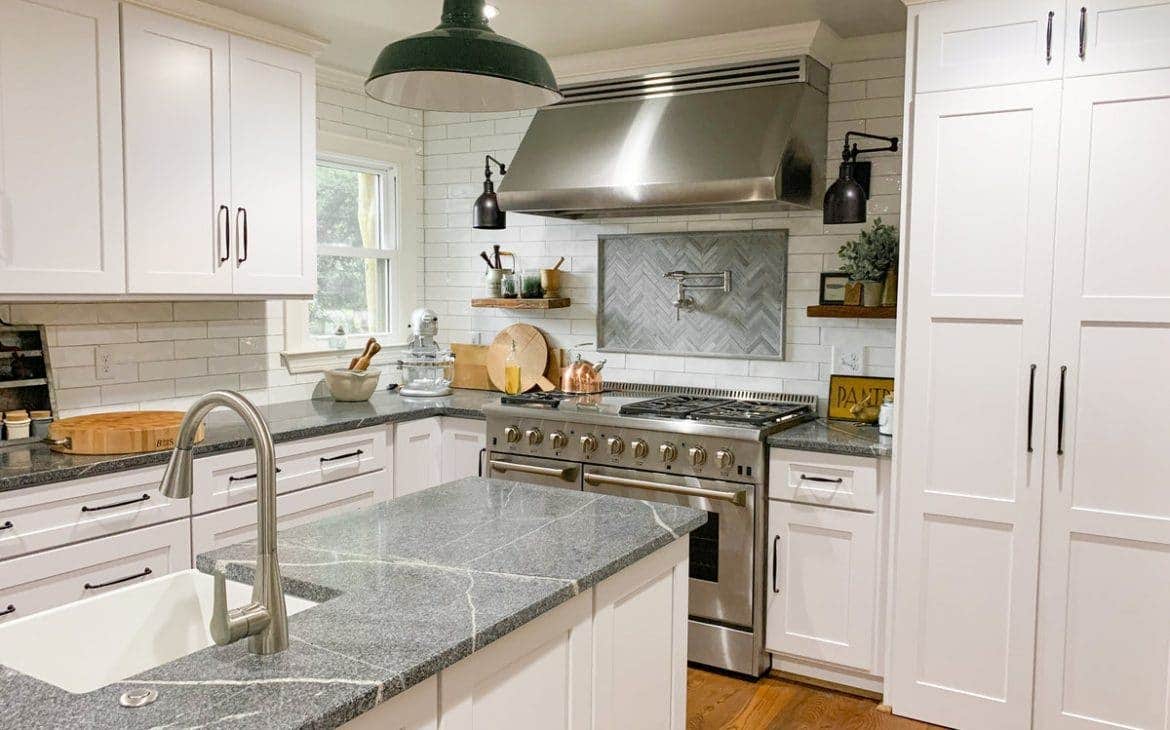
Streamline your kitchen experience.
Proline’s powerful range hoods are also versatile. High cubic feet per minute, or CFM, is great, but it doesn’t accommodate all cooks. We want to adapt to your cooking style, so our hoods come with control panels that allow you to adjust the speed.
Most hoods have four-speed control panels, while others have six-speed. Also, our ProV and PLJW 104 models feature adjustable knobs.
Its overhead lights will help you read whatever you need and see what you’re doing better while cooking.
Finally, if it’s a Proline hood, the stainless steel baffle or mesh filters are conveniently dishwasher-safe. No need to spend your valuable time scrubbing away at those tough stains on your grease filters.
Clean your air efficiently.
While you cook, grease, dirt, smoke, and other chemicals are constantly being produced in your home. Without a hood, these will build up in your kitchen and lead to poor indoor air quality.
But, a range hood will clean your air efficiently. The amount of air your hood will move, or CFM, you want for your range hood will depend on your cooking style.
If you’re not sure exactly what CFM is best for you, check out this article.
Impress your friends, family, and guests.
Not only is a range hood functional, but it’s also a beautiful appliance for any kitchen.
An island range hood can be a powerful statement piece – or you could go with a more subtle approach with a concealed range hood insert. Regardless, the new addition to your kitchen will be a great conversation starter!
Check out more great range hood benefits in this article.
That wraps up our article. Hopefully you found the answers to these questions helpful. If you have any other questions, call us at (877) 901 – 5530 and we’ll be happy to help. Thanks for reading!
Related Articles
111 Inspirational Kitchen Hood Ideas
How does a range hood work?
Most range hoods or vent hoods are powered by a single motor. Some have two or more. These blower motors suck fumes and cooking exhaust from over your cooktop through ductwork and outside your home (or through charcoal filters with ductless models).
Residential hoods pull up to 2000 CFM, while commercial range hoods can pull up to 5000 CFM or more. They are typically powered with a standard 120-volt outlet or hardwired straight into the kitchen’s electrical system.
What is a range hood?
A range hood is a kitchen appliance that filters smoke and other unwanted contaminants in your kitchen air outside of your home. Residential range hoods come in a variety of CFM ratings. Most residential hoods come in 400-1800 CFM.
But, it’s possible to find range hoods under 400 CFM. Or if you’re an avid cook looking for an incredibly powerful hood, 2000 CFM may be what you’re looking for.
The two most common types are ducted and ductless. Ducted range hoods pull air through ductwork that can run through your wall or ceiling and then outside your home. This is the most effective option in your home since they filter all the grease, dirt, and chemicals in your air outside your home.
Do range hoods have to be vented outside?
Your range hood can either vent to the outside if it is a ducted range hood. Or, you can purchase one that recirculates the air in your kitchen; those hoods are called ductless range or vent hoods. If you want the job done right, ducted range hoods are more efficient and powerful than the ductless ones.
But some people may not be able to duct their hood to the outside. The most common situation we run into is people who live in an apartment or condo. These customers can’t install ductwork either due to their building codes or because they live in a multi-story complex where they can’t duct to the outside.
If you fit that description, consider a ductless range hood for your kitchen.
How does a ducted range hood work?
Ducted range hoods move your kitchen air through ducting and outside your home. This ensures that you have great indoor air quality. The duct can run vertically or horizontally to the outside. Then, it’s usually capped off with a roof or wall cap to keep outside dirt, dust, water, and debris from building up inside the duct.
How does a ductless range hood work?
Recirculating or ductless range hoods filter air through charcoal filters and recirculate it back into your kitchen. The charcoal filters trap some unwanted contaminants and does an average job of neutralizing odors. But it won’t catch all the contaminants, so the best option is to go with a ducted range hood if at all possible.
How does a convertible range hood work?
Convertible range hoods can be converted from ducted to ductless.
Ducted hoods are the most popular type of hood. Typically, you won’t find many options for ductless hoods, but a convertible hood gives you flexibility when choosing the right range hood for your kitchen. They are a great option if you like the style and quality of a ducted hood but want to install it as ductless.
For more information on convertible range hoods, check out this article.
How does a downdraft range hood work?
Downdraft range hoods are fans installed behind your kitchen range. They suck the air down into a duct or inside the vent through filters. Then the air recirculates back into your kitchen. Many downdraft ranges can be lifted out of your kitchen range and set back in place when you’re not cooking. They are not as efficient as typical updraft range hoods which catch the cooking fumes as they rise from your pans.
How does a range hood filter work?
A range hood filter captures grease and dirt from your kitchen air. The most common types of filters are baffle and mesh filters. Ductless hoods use charcoal filters which trap grease and neutralize odors before the air moves back into your kitchen. Replace your charcoal filters after about every 120 hours of cooking. If you use baffle filters, clean these every three to six weeks depending on your cooking style.
How does a microwave range hood work?
Microwave range hoods are built with fans that vent air through ductwork to the outside or recirculate it in your kitchen. Microwave range hoods are generally 300-400 CFM or weaker, which is not a lot of power to vent smoke and grease outside your kitchen.
One common question we hear from customers is: should I buy a microwave vent hood or a range hood? There’s a lot to cover on this topic, but we wrote an extensive article comparing range hoods and microwaves here.
How does a commercial vent hood work?
A commercial vent hood works just the same as a residential range hood. Blowers are housed inside the range hood. They pull the smoke and dirty air through the hood, through ductwork, and out of the kitchen or cooking space.
The primary difference between commercial and residential hoods is CFM. While most residential range hoods pull between 600 and 1800 CFM of air, commercial hoods are as powerful as 5000-6000 CFM, and sometimes more.
To vent that air effectively, commercial hoods will also require larger diameter ductwork.
How do Proline’s vent hoods work?
At Proline, we manufacture hoods that are easy to use. Most of our hoods use stainless steel push buttons and touch control panels, while a couple of them feature push buttons. Some of our island hoods feature matching control panels to make operating the controls even easier while you’re busy cooking in the kitchen.
Check out this page for detailed instructions on how to operate each one of our range hoods.




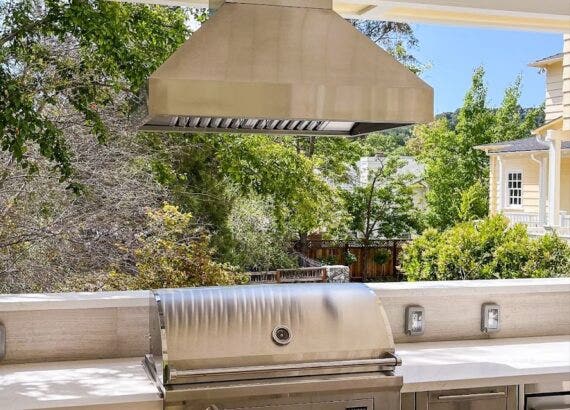
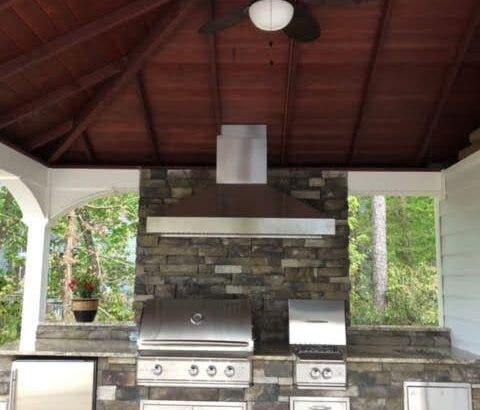
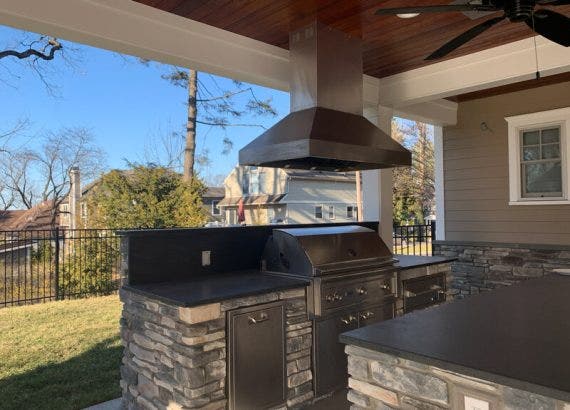
Comments are closed.